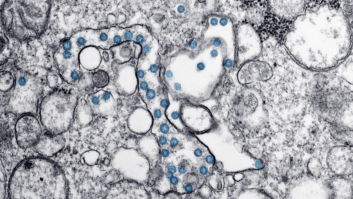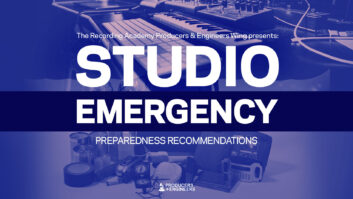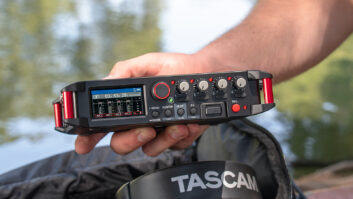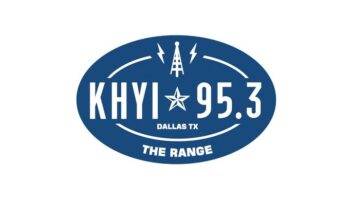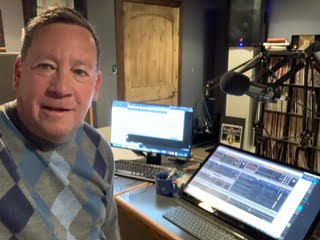 Wyoming Public Media is among the radio organizations building new pathways and processes for broadcasting from home during the COVID-19 pandemic.
Wyoming Public Media is among the radio organizations building new pathways and processes for broadcasting from home during the COVID-19 pandemic.
Paul Montoya is director of engineering for WPM, which is part of the University of Wyoming and located in Laramie. It operates 45 transmission facilities; WPR channels covers 90% of the state.
Radio World: I’m told you’ve been doing some live shifts from home yourself. What technologies and products are you using and how do the pieces plug together?
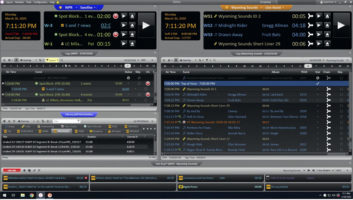
Paul Montoya: This is something we have been working on for the last year, primarily for remote broadcasts. The goal has been to control the equipment back at the studio as if you were sitting in front of it. In the past, the most we could do is have someone bring up the remote location on the control room console, then fire “next event” closures when needed to play underwriters announcements, promos or other elements.
So to do this properly you really needed two screens at the remote location — one to remotely control the mixing console at the studio and the other to fully control the automation system. We use a Telos Axia Element console at the studio. For automation we use the RCS Zetta system. At our studios we use the Raritan Dominion KX III KVM to control workstations in all of our studios. This is an IP-based system so devices can be accessed via web browser.
So, to put everything together we first access the Control Room Zetta screen via secure VPN remotely on one screen. We now have a full-function version of the same screen an operator would be using in the studio (Fig. 1). Now we need some way to control the levels, inputs and channel on-off functions of the console.
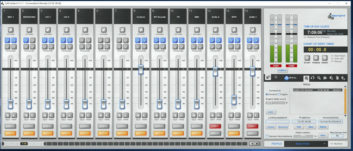
Telos Axia makes a piece of software called SoftSurface that accesses remote control of any LiveWire-based Fusion or Element console in a graphical format (Fig. 2). With this software on my second screen I can now control any function on the studio console from a computer on the LiveWire VLAN. Because I don’t want to extend my AoIP VLAN out of the studio, I run SoftSurface on another computer connected to the LiveWire VLAN. I can then access this computer through the secure VPN tunnel (or TeamViewer or GoToAssist).
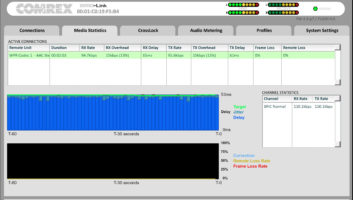
The final element is a Comrex BRIC for getting my audio back to the studio console (Fig. 3). Now any audio at my remote location can be put on the air. In the case of the studio in my home this gives me access to a CD player and turntable. Now I can pretty well do anything that I could as if I was standing in the studio.
We always been prepared to use a setup like this for a campus emergency such as an “active shooter” situation. Never did we think it could also be used for a worldwide pandemic.
RW: What has the impact of the crisis been on air talent and other staff?
Montoya: We have four audio channels that we deliver. WPR Main (NPR, News and Information), Classical Wyoming, Wyoming Sounds (AAA Music) and Jazz Wyoming. Classical and Jazz have been no problem as they are satellite-delivered formats. Wyoming Sounds has gone 90% voice track with announcers being able to voice-track easily through the Zetta2Go interface that can be accessed through secure VPN. We have been able to do remote programming for live segments through the process I explained earlier.
The WPR Main Channel has been our biggest challenge because of the varied and ever-changing elements of the format, including White House press conferences that come at a variety of times and almost never seem to start on time. Between accessing the Zetta automation system remotely through our secure VPN and changing Axia Livewire audio routing remotely, we have been able to keep up with most functions remotely and safely. “Morning Edition” and “All Things Considered” in the afternoons are still being hosted live, however we have made plans to host these shows remotely and still have a live feel to the programs.
[Related: COVID-19: WAMU’s Game Plan]
Fortunately these two programs have fixed clocks and timed breaks so filling these elements remotely isn’t too terribly difficult. The host can record their local newscasts, weather and other timed show elements remotely. These can then be uploaded via secure VPN to an mapped ingest folder for our automation system. Then working in cooperation with our programming and traffic people these can be placed remotely into the proper location in the log. We have not had to try this yet, but it should work.
Reporters have been producing their stories remotely then dropping their stories into “Shared Audio” folders at the studio via secure VPN. Staff meetings are being conducted weekly using Zoom. We do “audio only” Zoom sessions as some people call in by phone. We haven’t found video to be necessary. So far this has worked quite well.
RW: What is the strategy of the WPM technology team to react to the coronavirus, as far as its overall operational and technical processes are concerned?
Montoya: We had a pretty good idea that COVID-19 virus could affect our operation about late February. We had received a copy of a plan put together by Northern California Public Radio that seemed to be similar to the plan we knew we would need. Working with our General Manager Christina Kuzmych, our program director and our news director, I was able to put together a plan that should hopefully get us through this crisis.
The plan consisted of three stages. Essentially Stage 1 was a readiness stage that took preventive measures to keep areas clean. Stage 2 included non-essential people working from home. The only people in studio would be live on-air personnel. Stage 3 would include all personnel working from home.
RW: How “virtual” can your operation get, and how?
Montoya: The plan is that by Stage 3 we would be 100% virtual with little knowledge by the general public that we were operating any less effectively. We have taken the attitude that we are an essential lifeline of information to the Wyoming public during a time of crisis. So far we have not had to operate at a Stage 3 level but I feel that we could.
RW: Any other specific technical obstacles have you encountered?
Montoya: Much of what we are doing, absolutely could not be done just a few years ago. A secure VPN was important. Access to our office VLAN for sharing and exchanging information was very important. Total remote control and access to our automation system was also important. The icing on the cake was remote control of the main mixing console. Access to these systems was very important, but we needed to accomplish this in a secure fashion.
RW: What lessons can other engineers and technical managers learn from what you’ve been doing?
Montoya: Preparing for any crisis is important to station operations. I’ve heard it said by other broadcast engineers that by simply looking around your plant (including transmitter sites) and just trying to imagine what can be done to stay on the air in a variety of emergencies is the first place to start. Just by stepping back and asking yourself, “If my studio was swallowed up by an earthquake, is there any way to stay on the air?”
Sharing your ideas with other station department leaders and general manager to make sure everyone is on board with any emergency is the final element in being prepared for any emergency. You also have to realize that it is almost impossible to plan for every situation and you may just have to “MacGyver” things in some situations. They used to call this a “can do” attitude. Most engineers are quite skilled at this.
RW: Do you think these infrastructure changes will be permanent in any way?
Montoya: I would say that almost everything done during this crisis will stay in place. There is always another crisis looming on the horizon. We may collect up all the extra laptops we have distributed to staff members, but we will hang onto them to keep ready.
We’re looking to tell your story about solving radio technical challenges during the coronavirus crisis. Email us with your story idea at [email protected].
